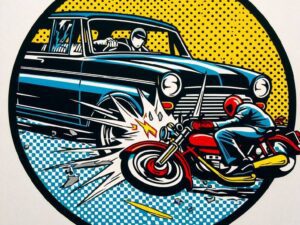The best JDM cars of the 90s
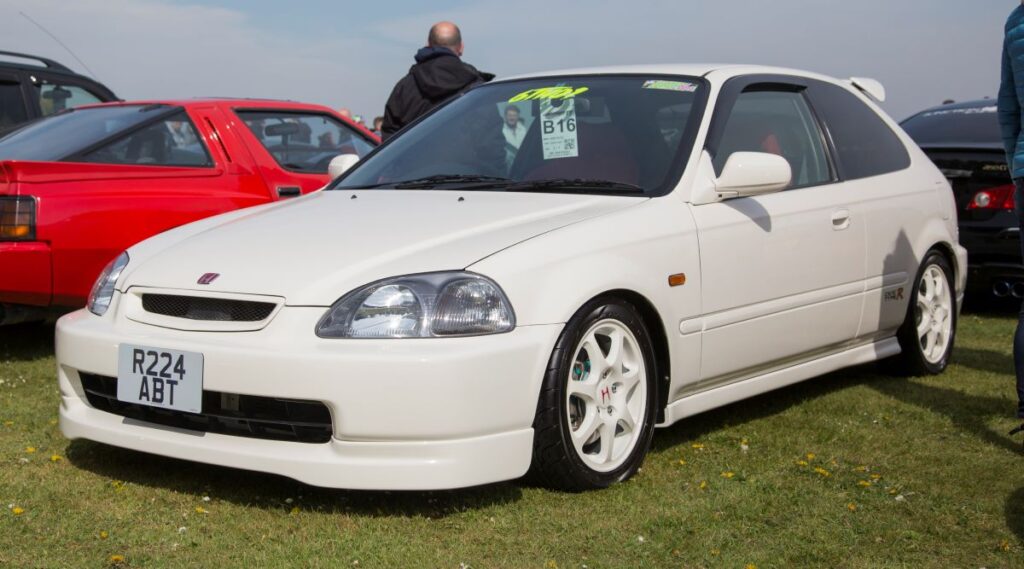
There’s no doubt that the 1990s was the era of the JDM tuner car. This pivotal decade for Japanese car culture arguably brought with it more of the most iconic performance offerings and modifying favourites than any other time in automotive history. In fact, many of these legendary cars come with a lasting legacy and remain popular right up to the present day.
But the real question is: what homegrown heroes were the very best cars that Japan had to offer in the 90s? That’s exactly what we’re here to answer with a slick selection of our all-time top picks.
Be warned though, if you’re looking for a JDM tuner car of your very own, you’d better get in there quick – the price of many Japanese modern classics seems to be going through the roof at the moment!
So, with that in mind, let’s get to it. In no particular order, here are the greatest JDM cars of the 1990s.
1. Nissan Skyline R34 GT-R
The 90s was truly the decade of the Skyline GT-R. In just 10 years, we saw three different models on sale, all going on to become the darlings of the tuning scene. And this is a pedestal that they sit firmly on to this day. In fact, a guide to the 90s JDM classics just wouldn’t be complete without a nod to the most iconic cars of the PlayStation generation.
The Gran Turismo Racing badge itself – a nameplate which will forever be associated with the hottest Nissans – was introduced in the 60s on the legendary C10 “Hakosuka” Skyline and died off with the C110 “Kenmeri” Skyline in 1973. But, after more than 15 years on the sidelines, it made a huge comeback with the world-beating all-wheel-drive Skyline R32 GT-R. The car’s very existence came down to just one thing: to cater for Nissan’s desire to decimate all in the rather serous world of touring car racing.
Anyway, R32 GT-R and R33 GT-R saw out most of the decade up until the most coveted of all the 90s GT-Rs came along just in time for the millennium. We’re talking, of course, about the iconic Skyline R34 GT-R. This model has the distinction of being the last GT-R badged Skyline because – well, the modern Nissan GT-R may be the spiritual successor, but it doesn’t strictly count as a Skyline.
The R34 GT-R was also the last Skyline to come equipped with the RB26DETT, 2.6-litre twin turbo engine, which has become something of a mythological beast in the tuning world. This legendary lump was made even more infamous by a “gentleman’s agreement” between Japanese manufacturers not to advertise their cars as having more than 276bhp. For the R34 GT-R in particular, Nissan stated a 276bhp figure from the factory, but by most reports, it was in excess of 320bhp. And that’s before a whole list of legendary tuners got hold of it!
If you’re after an R34 GT-R in 2023, you can expect to pay supercar prices. £100K or more isn’t unusual for one of these nowadays – if, of course, you can actually find one.
2. Toyota Supra A80 (Mk4)
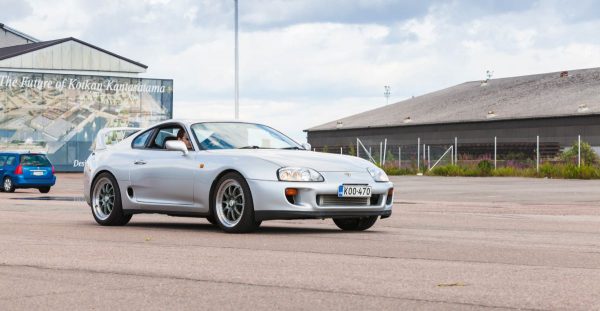
Another tuning icon – and one that was popularised even further as the JDM hero car in The Fast and the Furious movie – is the Mk4 Toyota Supra.
Landing in 1993, many see this Japanese sportscar as the arch enemy of the Nissan Skyline, and there’s a lot of truth in that. It’s commonly referred to as one of the all-time great automotive battles for the hearts of tuning fanatics around the world. The “Toyota vs. Nissan” debate still rages on to this day.
The A80 was also famous for the introduction of one of the most legendary engines on the modifying scene: the 3-litre, twin-turbo 2JZ-GTE. Arguably the most tuneable powerplant of all time, Toyota stated the same 276bhp “gentleman’s agreement” figure as the Skyline, but, in reality, it kicked out significantly more power. Many tuners over the years have managed to squeeze out horsepower figures in their thousands from these engines. This is the main reason why a Twin Turbo Supra – preferably with a manual gearbox – has become the tuner car holy grail.
Looks-wise, a complete redesign to incorporate plenty of curves makes the A80 a far cry from the boxy Supra models of the 1980s. And, once again, these cars command a pretty hefty price tag. You’ll be lucky to get change out of £50K for a half-decent example.
3. Mazda RX-7 FD
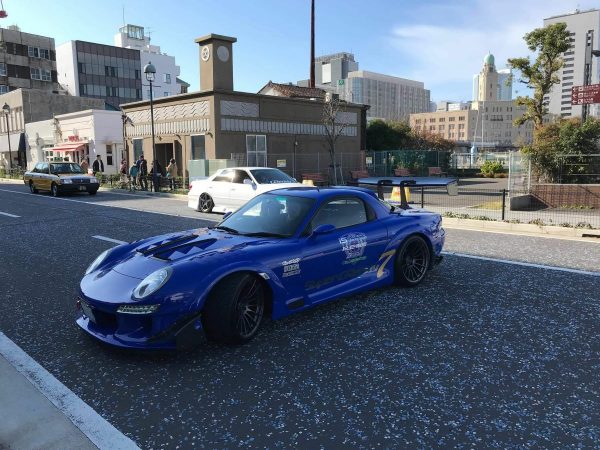
There’s no doubt that this was the car that bought rotary power into the modifying community. The RX-7 FD wasn’t the first Mazda sporting a Wankel engine; that distinction is given to the Cosmo in the 60s. In fact, it wasn’t even the first RX-7 to have one. But forget about all that because the FD was certainly the prettiest sportscar of its day. In fact, many say this is the best-looking Japanese car ever made. And they could be right.
All the curvaceous looks aside though, the high-tech Mazda was built chiefly to perform in motorsport, and it’s commonly regarded as one of the finest driver’s cars ever to come out of Japan. The tiny 1.3-litre engine capacity may seem a little laughable at first, but rotaries can’t be compared with piston engines in that way and the twin turbo RX-7 easily hit the “maximum” 276bhp figure. Many believe that the later variants had much, much more power than they were given credit for. What is for certain is that this car is also a great base for tuning – it’s been well catered for by the aftermarket for years now.
What’s perhaps most important of all is that 13B-REW engine was super lightweight, giving the FD perfect 50:50 weight distribution. The handling is nothing short of legendary, and it made its name in many a motorsport discipline over the years. Even more than that though, the RX-7 is undoubtably an icon on the streets, and that makes it more than worthy of a place in our top 10.
4. Honda NSX
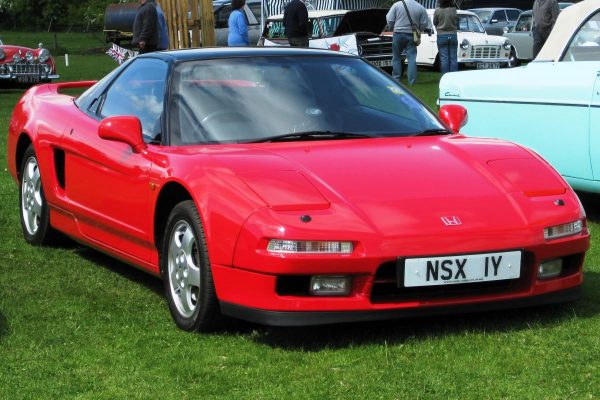
Charles01 via Wikimedia Commons
Revered as the first bona fide Japanese supercar, the Honda NSX is easily one of the most iconic silhouettes of all time. And that’s from any manufacturer, not just those in Japan. The idea here, as you can imagine, was to build a world-beating, mid-engine 2-seater at a cheaper price point than the established European exotica, but all the while exceeding their performance and handling capabilities. Perhaps most important of all, the New Sportscar eXperimental (NSX) came with Honda’s trademark reliability. In those days, it was almost unheard of for any supercar to be used as a daily driver, but the big Honda was a car you could take to the local supermarket just as easily as around the track.
The Gen-1 NSX was also the first production car to feature an all-aluminium monocoque, which did more than a little for the handling and acceleration. So, this supercar game changer wasn’t just about power figures; it was actually an amazing drive. A novel concept, we’re sure. Until this monster came along, the Prelude was Honda’s flagship model too. So you could say that the NSX was a bit of a step up for the brand.
There’s a lot to love with the NSX. It has a cockpit inspired by the F16 fighter jet, a naturally aspirated 3.0-litre V6 VTEC engine, and Ayrton Senna himself helped to develop the impeccably-tuned chassis and handling package on Japan’s famed Suzuka circuit.
As you may have guessed though, the real issue for us mere mortals is the pricetag. An original base model NSX was around £45K in the 90s but will easily fetch upwards of £200K nowadays. Start saving people!
5. Toyota Celica GT-Four ST205
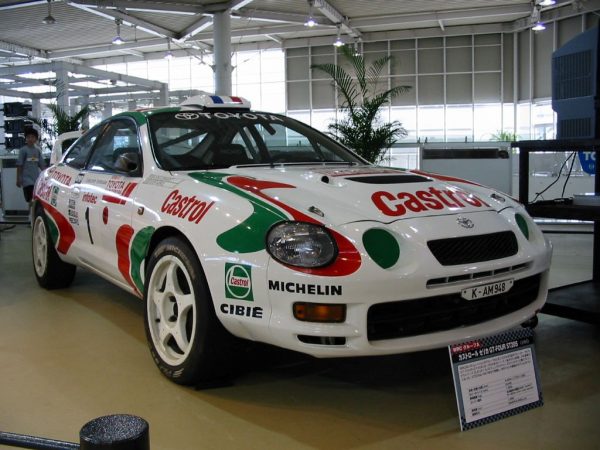
Mytho88 via Wikimedia Commons
While the Subaru Impreza and Mitsubishi Lancer seem to get all the love from rally fans, the Celica GT-Four was actually the first turbocharged all-wheel-drive (AWD) car entered into the World Rally Championship (WRC) by any Japanese manufacturer. It was certainly the first to start bringing home the silverware, winning a whole load of events in the 90s – right up until Toyota got caught cheating with illegal turbo restrictors in 1997.
But let’s not worry about this small indiscretion because the roadgoing GT-Fours are absolute animals, even by today’s standards. These lightweight tarmac destroyers come highly recommended by those in the know, and they were quite different to the other Celica models of the time.
It wasn’t just the AWD system which replaced the front-wheel-drive setup of the standard versions, either. The GT-Four came equipped with a big fat turbocharger strapped to the side of a 3S-GTE engine.
There were three different versions of the GT-Four in the late 80s and 90s, with the ST165 and ST185 being the first two. But, perhaps the most renowned variants are the later ST205 models. Produced between 1994 and 1999 and based on the “round headlight” 6th generation Celica, even now these are the most powerful examples ever constructed. The JDM version produced a whopping 252bhp, way more than the toned-down GT-Four we got here in Europe.
What’s also interesting is that each of the 2500 “GT-Four WRC” homologation cars came with all the necessary plumbing to activate the anti-lag systems of the competition vehicles. Among other motorsport-focused bits and pieces, they also came equipped with water injection and a massive rear spoiler.
Of the 2500 produced, only 400 were ever built for export, making the vast majority of ST205s genuine JDM icons.
6. Honda Civic EK9
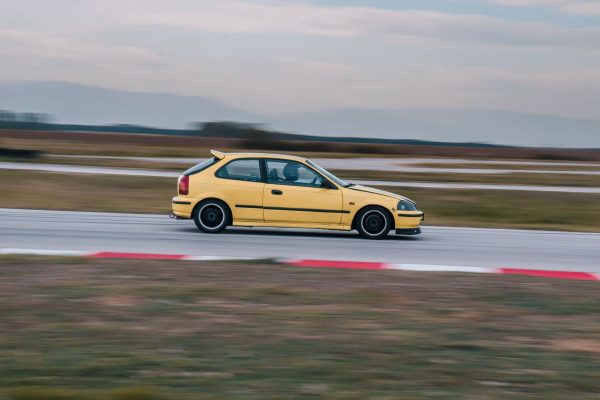
What could a humble Honda Civic possibly be doing on our list of uber JDM cars from the 90s? Well, for many, the original Civic Type R – denoted the EK9 – is the greatest Honda hatchback of all time. It’s also one of the true-blue JDM motors on our list. And by that, we mean that no version of this car was officially available anywhere outside of Japan. So, while this variant of the 6th generation Civic wasn’t the first Honda to sport the legendary Type R badge, it is likely the most well known.
Initially available in Starlight Back Pearl, Vogue Metallic Silver and – most famously – Championship White (with later facelift versions available in Sunlight Yellow), the compact EK9 was an instant hit. In fact, Honda have been taking the heat for not offering this one on a global scale ever since. No wonder every Civic Type R thereafter was sold worldwide, eh?
Anyway, despite 16,000 hitting the streets, the EK9 Type R is a rare collectors’ car nowadays – and the prices reflect just that. But what is it that makes this one such a special “unicorn” model?
Well, aside from the famous red Recaro Interior (notably except for on a few Motor Sports versions in 1998), the Type R saw the introduction of the twin cam VTEC B16B engine. This iconic powerplant was hand ported, blueprinted and factory tuned to 182bhp, offering one of the highest power outputs per litre of any production car at the time. The chassis on the EK9 was also extensively seam welded to improve the rigidity, and there was a whole new suspension package, helping this model to feature on numerous lists of the best handling hatchbacks of all time.
7. Nissan Fairlady Z32 (Twin Turbo)
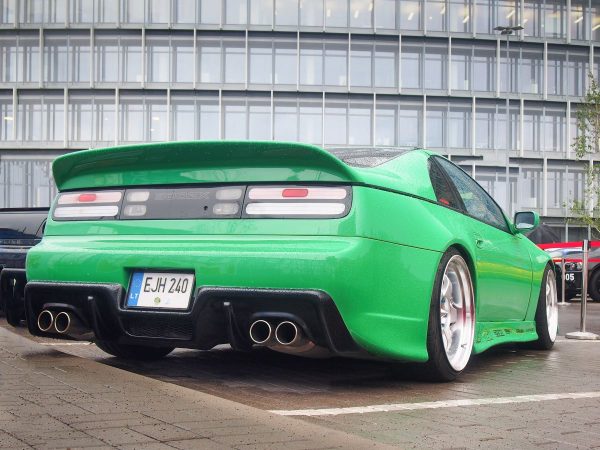
If there was ever a hairy-chested JDM muscle car in the 90s, it would be the Z32 Fairlady Z, which is better known here in Europe as the mighty 300ZX. Pioneering all sorts of gadgetry we take for granted nowadays – e.g. tweaks such as variable valve timing, multiple intercoolers and 4-wheel steering – it was also one of the world’s very first CAD-designed production cars. And, we have to say that the computer did a rather good job here, too.
Aside from being amazingly good looking, the Z32 also paved the way for the modern generations of Fairlady Z – the cars we know as the 350Z, 370Z and the current 2023 Nissan Z (RZ34). This fourth generation “Z Car” also had the lineage of the original Datsun 240Z, and you simply don’t get any Nissan Z badge without being a little on the special side.
When it comes to big powerful lumps, many forget that (in terms of Top Trumps figures), the Fairlady Z outshone even the Skylines of the day. The Z32s may not have as much kudos as their GT-R-badged brethren, and even now they can still be bagged for reasonable prices (for the time being), but the top-spec model was stuffed with a 3-litre twin turbocharged V6 with over 300bhp on tap. That alone makes the Z32 Fairlady Z one of the greatest Japanese sportscars of all time.
8. Nissan Pulsar GTI-R (N14)
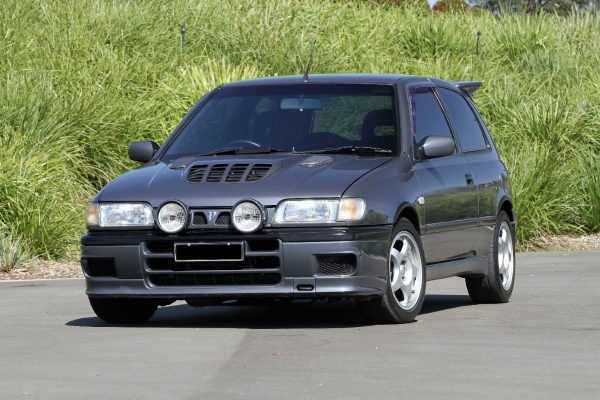
Gtiroz via Wikimedia Commons
Since the late 1970s (and through five generations), the Nissan Pulsar was a relatively sedate compact shopping runabout. These were also popular here in Europe as the Nissan Sunny, although there wasn’t much about them to make you feel all warm and fuzzy inside. They were OK of course, but that’s about it. Hardly a glowing example in the world of JDM automotive excellence.
Still, boring became bonkers in the 90s when Nissan decided that crowbarring in a cutting-edge AWD system, along with the 227bhp turbocharged SR20DET out of the Silvia, could make the Pulsar just the ticket for Group A rallying. And that’s how the fire-breathing GTI-R was born.
It’s easy to underestimate what this car did for the JDM tuning scene. Even though the GTI-R was only produced for four years between 1990 and 1994, it’s easily one of the craziest hot hatches of all time.
It’s also the car that spawned a million replica parts. That trademark bonnet vent (which was designed to funnel air to a top-mounted intercooler) could be found on a whole host of modified street cars in the nineties – and not just on Nissan’s either. What’s most important though, is that the GTI-R still looked like a Pulsar, albeit with a whole load of pumped-up styling mods. The modifying community realised that they could do the same to their own cars and this launched a whole new era of show car styling. In this way the GTI-R was inspirational for modifiers the world over.
When it comes to the performance too, this is easily one of Nissan’s most underrated cars of the era. What with the Skyline, Silvia and Fairlady models grabbing all the attention, it’s hardly surprising. But the lack of recognition isn’t the worst of it, because this one was replaced with the rather sedate Pulsar N15 (otherwise known as the Almera here in Europe). So, we can’t help thinking that Nissan went backwards in the hot hatch segment by the end of the decade.
Still, we’ll always love the N14 Pulsar GTI-R – the candle that burns twice as bright truly burns half as long.
9. Subaru Impreza 22B STI
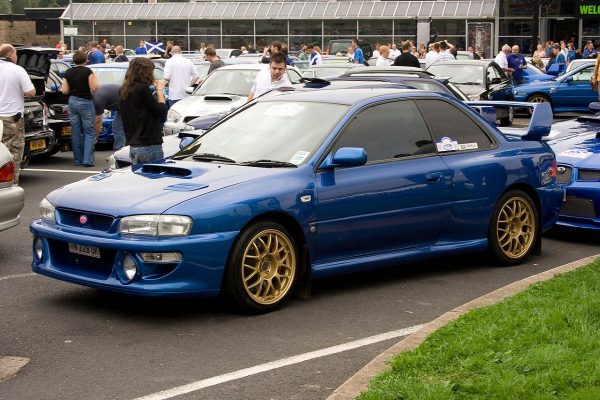
Stephen Hynds via Wikimedia Commons
There was a mind-boggling array of different Subaru Imprezas on sale in the 1990s. Although, technically speaking, they were all first-generation (otherwise known as “classic”) models, we saw a good couple of facelifts and an almost ridiculous number of trim levels and special editions roll off the production line. That is the Japanese way, after all.
Still, the Impreza is the most famous road-going rally car of all time, and arguably the original JDM 4-door super saloon. So, that’s exactly why we’re going to ignore convention and choose the ultra-rare 2-door version instead. The ultimate Scooby coveted by the most decerning Subaru purists has to be the mythical Impreza 22B STI.
Only 424 of these widebody monsters were ever constructed. Produced for only six months in 1998, 400 stayed firmly in the Japanese domestic market, and legend has it that every one of the JDM models sold within half an hour. Nowadays, although quite a few ended up being exported around the world, genuine 22Bs are still a rare sight in Japan let alone anywhere else.
The 22B was built to commemorate Subaru’s 40th anniversary, along with their third consecutive manufacturers’ title in the WRC. But this car is so much more than a tarted up trophy that’s painted in a unique blue hue and missing a couple of doors. It’s likely the most iconic rally car of them all.
This unique variant featured an uprated 2.2-litre turbocharged EJ22G flat-four engine, suspension specially developed by Bilstein, bigger wheels and a whole host of other goodies. But, even with all the trinkets, it added up to a whole load more than the sum of its parts. Nowadays, the 22B is one of the most expensive Japanese performance cars to ever go under the auctioneer’s hammer. Back in 2021, one sold in the US for over £300K – and, just two years later, that constitutes something of a bargain.
10. Mk2 Toyota MR2 GT/GT-S (SW20)

Charles01 via Wikimedia Commons
The second-generation Toyota MR2 – known to the world as the SW20 – wasn’t just popular in Japan, it stormed the whole of Europe and the US. It’s easy to see why this little 2-seater is still so revered: the mid-engine layout and quirky styling is constantly compared to the Ferrari 348 of the era. There were also plenty of variants to choose from, including the sought-after T-Bar models with their 2-piece removable glass roof. Most of all, though, the “Mister Two” was one of the best cars on the original – and equally iconic – Gran Turismo video game. Something that kept the baby Toyota firmly in the modifying zeitgeist for many years to come.
So, we all love this modern classic then, but what made the JDM lineup so much better than the rest? Well, that’ll be the GT-S and “luxury” GT models specially constructed for the home market. These rare variants came equipped with a turbocharged 3S-GTE engine producing around 220bhp. The top-spec European model had no turbo at all and less than 160bhp.
Now, it almost goes without saying that these “MR2 Turbos” became one of the most popular tuner cars on the streets. But, as is often the case, they also had a great deal of success in motorsport. Over many series, they saw plenty of (arguably) more sophisticated racers, such as the Porsche 911, BMW M3 and Ferrari F355. The SW20 Turbo was also the first car in its class to break the 200mph land speed record. And, apart from the wingmirrors, spoiler and wiper blades being removed, it did this with a completely standard body. Okay, they did tune the engine to nearly 500bhp on that one, but even so.
And perhaps that’s where the key to the JDM MR2 GT and GT-S models lie. The sheer tuneabilty of the turbocharged engine, and the availability of aftermarket parts, made them an icon in the modified car world. The big Japanese tuning houses, such as HKS and Blitz, were onboard from the very start, and the SW20 MR2 was easily one of the most well-served cars for decades.
Perhaps best of all, many of the turbo models have found themselves imported into the UK over the years, and there’s still quite a few out there to this day. The money side isn’t too bad for now, either.
Get imported JDM car insurance
If you’ve decided to finally take the plunge and buy your dream JDM car from the 90s, call us for an imported Japanese car insurance quote to help take the stress out of the importing process. We offer tailored cover to suit your needs and budget. Call us on 0800 369 8590 or book a callback for a fast, affordable quote.

